Integrated Mobility Sciences Newsletter—Summer 2020
This quarterly newsletter highlights recent projects, partnerships, and publications related to NREL's energy-efficient mobility research.
Subscribe to receive this newsletter via email.
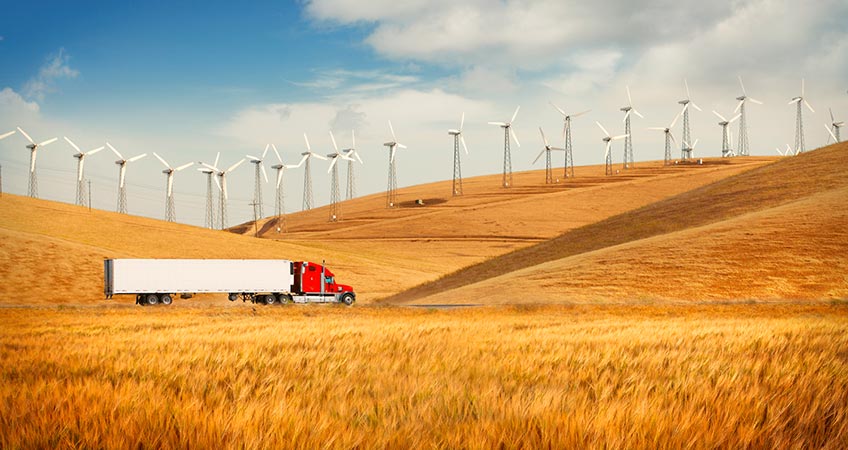
Freight Matters: Toward Sustainable Medium- and Heavy-Duty Fleets
Medium- and heavy-duty trucks are the backbone of our highly mobile economy, and transportation data tell a story of opportunity for reimagining how they move goods across the country.
In 2017, medium- and heavy-duty trucks were only 4% of the U.S. vehicle population but accounted for 26% of fuel use.1 The same year, the transportation sector accounted for 28% of total U.S. greenhouse gas emissions2—23% of which can be traced back singlehandedly to medium- and heavy-duty trucks.3 By some estimates, fuel efficiency measures alone could save commercial vehicle operators around $170 billion in annual fuel costs.4
At NREL, we keep statistics like these front-of-mind. We see prospects in them—both big and small—for slashing fuel costs for commercial fleets, reducing air pollution in our communities, and supporting economic opportunity. As you'll read in this month's edition, in the freight realm that means pushing the boundaries on truck electrification and hydrogen big rigs, conducting biofuel research that promises big emission reductions, and producing tools that empower transportation decision makers to optimize energy productivity.
The U.S. freight fleet matters—and NREL researchers are laying the scientific foundation and early-stage research for unlocking its economic and environmental potential.
Stay healthy,
Chris Gearhart
Director, NREL's Center for Integrated Mobility Sciences
1 Federal Highway Administration, “Annual Vehicle Distance Traveled in Miles and Related Data – 2017,” in Highway Statistics 2017, March 2019.
2 U.S. Environmental Protection Agency, “Carbon Pollution from Transportation.”
3 U.S. Environmental Protection Agency, “Fast Facts on Transportation Greenhouse Gas Emissions.”
4 U.S. Environmental Protection Agency, EPA and NHTSA Adopt Standards to Reduce Greenhouse Gas Emissions and Improve Fuel Efficiency of Medium- and Heavy-Duty Vehicles for Model Year 2018 and Beyond, EPA-420-F-16-044, August 2016.
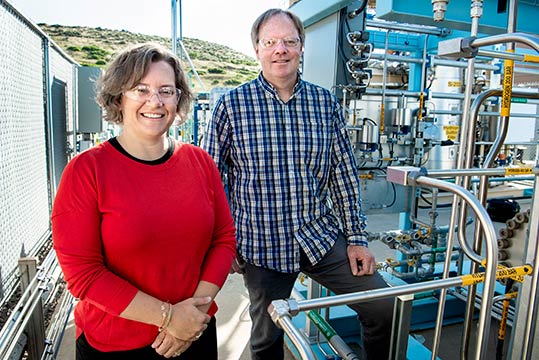
NREL Research Could Help Hydrogen-Fueled Big Rigs Hit the Road
A shift toward using hydrogen fuel in long-haul trucking could drive a coast-to-coast network of fueling stations, but before that can happen, scientists must address a few critical questions. NREL is helping industry address challenges such as reducing hydrogen fueling times and ensuring hydrogen fueling stations can operate in a variety of temperatures and weather conditions. Well-known leaders in transportation and fuels like Toyota Motor Corporation, Honda, Shell, and Air Liquide are partnering with NREL to make hydrogen fueling research for heavy-duty vehicles a priority through the U.S. Department of Energy’s (DOE’s) H2@Scale initiative.
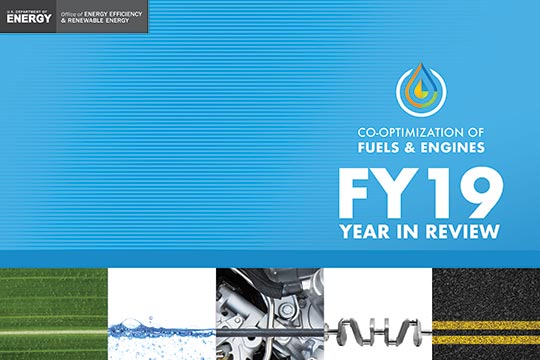
Combined Fuel and Engine Research Brings Cleaner, More Efficient Cars and Trucks Closer to Finish Line
The Co-Optimization of Fuels and Engines (Co-Optima) initiative celebrated Fiscal Year 2019 successes—including contributions from NREL and other national laboratories—with the June release of its FY19 Year in Review report.
Building on insights on biofuel interactions with turbocharged spark-ignition engines in light-duty vehicles, Co-Optima has shifted its focus to multimode, ducted fuel injection, as well as other combustion strategies for medium- and heavy-duty vehicles. When co-optimized with biofuels, this technology lays the groundwork for a cleaner, more affordable, and more efficient on-road fleet.

John Farrell Receives Esteemed SAE Fellow Recognition
NREL's John Farrell, laboratory program manager for vehicle technologies, has been named a 2019 Fellow of SAE International. The designation honors his exceptional leadership and distinctive accomplishments in fuel science and fuel–engine interactions. SAE is an association of engineers and other technical experts in the automotive, commercial-vehicle, and aerospace industries. It awards the fellow designation to long-term members who have made a significant impact on society's mobility technology through leadership, research, and innovation
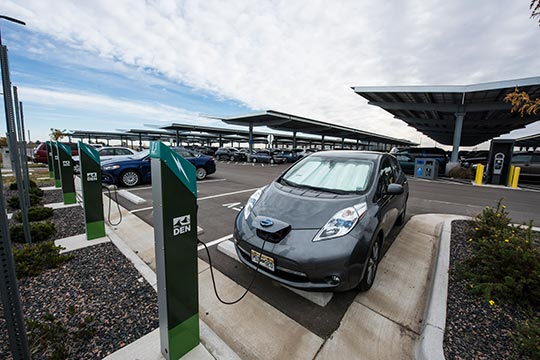
Research Determines Financial Benefit from Driving Electric Vehicles
Over the course of 15 years, motorists can save as much as $14,500 on fuel costs with an electric vehicle instead of a comparable gasoline-powered vehicle, according to a recent study by researchers at NREL and Idaho National Laboratory. This analysis provides an unprecedented state-level assessment of the cost of vehicle charging that considers when, where, and how a vehicle is charged, and considers thousands of electricity retail tariffs and real-world charging equipment and installation costs.
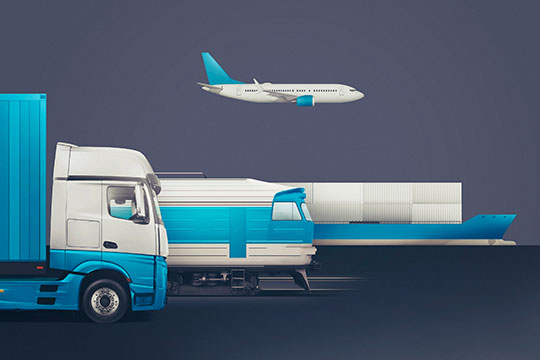
Freight Mobility Energy Productivity
Trends such as the rise in e-commerce, increased vehicle electrification, connectivity, automation, and new forms of delivery are poised to bring a paradigm shift in freight movement. NREL researchers developed the Freight Mobility Energy Productivity (F-MEP) metric to quantify the productivity of current and future freight systems from the shipper’s perspective. The metric provides a mathematical framework for quantifying freight productivity—connecting freight demand to freight supply, while accounting for inputs such as time, energy, logistics cost, and ease of shipping goods via various modes.

NREL's Sandra Loi Receives 2020 U.S. Department of Energy Distinguished Achievement Award
During the DOE Office of Energy Efficiency and Renewable Energy's Vehicle Technologies Office Annual Merit Review in June, NREL's Sandra Loi was honored with a Distinguished Achievement Award for her outstanding service to technology integration partners. For 11 years, Loi has been NREL's key liaison for the Clean Cities Coalition Network, connecting NREL expertise and tools with on-the-ground technical challenges. "Sandra excels at understanding stakeholders and how their needs intersect with our work," said Wendy Dafoe, who oversees NREL's role in Clean Cities. "That's what Clean Cities is all about."
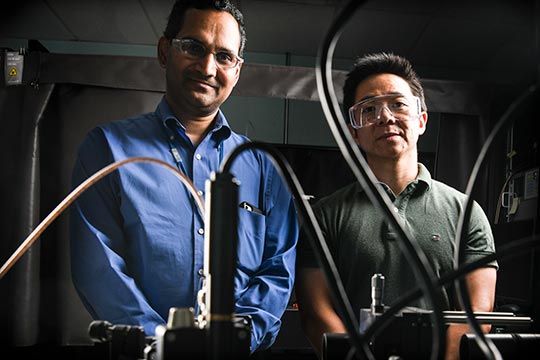
American Society of Mechanical Engineers Designates NREL Researcher as Fellow
NREL's Sreekant Narumanchi, who leads the laboratory's Advanced Power Electronics and Electric Machines group, was recently selected as an American Society of Mechanical Engineers (ASME) Fellow. The recognition honors his extensive involvement with ASME and his excellence in mechanical engineering research at NREL. Narumanchi’s involvement in ASME includes acting as InterPACK’s general chair in 2019 and the associate editor of ASME's Journal of Electronic Packaging for the past two years.
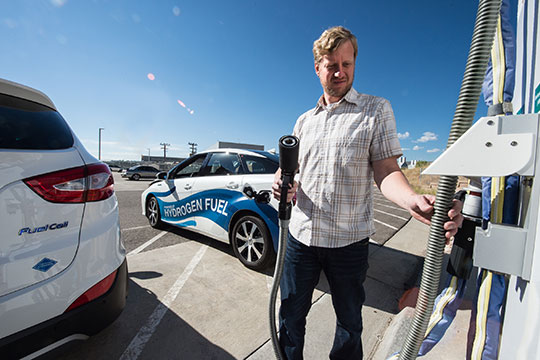
New Public Tool Aids in Development of Hydrogen Fueling Stations
NREL researchers, in collaboration with Kyushu University in Japan, have developed a new Hydrogen Filling Simulation (H2FillS) to answer vital questions about the change in hydrogen temperature, pressure, and mass flow when filling a hydrogen fuel cell car. The model will enable hydrogen station designers and operators to outline station performance and vehicle fill characterization based on a variety of parameters. The intuitive “drag-and-drop” graphical user interface allows users to evaluate both full-station models and partial-station models, which focus on dispenser components.
Get To Know Our Team: Rob Farrington
Rob Farrington began his NREL career in 1979 and today leads the Center for Integrated Mobility Sciences' strategic planning and business development efforts. During his four decades at the laboratory, Rob's work has spanned various technical arenas, including vehicle propulsion technologies, vehicle thermal management, solar thermal systems, and building energy systems. Listed in Strathmore's Millennium Edition of Who’s Who, Farrington holds four patents and has published more than 70 reports, papers, and articles. He earned his Ph.D. in mechanical engineering from the University of Colorado.

Must Reads
Lithium-ion batteries—particularly those used in electric vehicles—inevitably suffer minor damages or defects during their lifetime. In current battery management systems, however, these defects can go unnoticed if they do not exceed certain voltage or temperature thresholds, posing hidden safety risks. A recent NREL study in the Journal of Materials Chemistry A discovered that capacity loss and current leakage are two previously unknown major indicators of defective batteries and proposes several methodologies for applying these indicators to a battery management system, allowing for early warning about damaged batteries. Learn more about NREL’s energy storage research.
To alleviate the potential negative impacts of widescale, uncoordinated plug-in electric vehicle charging on the electric grid, researchers developed a highly efficient control framework to enable dynamic, centralized charging coordination for large populations of plug-in electric vehicles. The “receding horizon” framework was detailed in a recent International Journal of Electrical Power and Energy Systems article. Learn more about NREL’s electric vehicle grid integration research.
Major disruptive technologies are set to redefine the way people view travel, particularly in dense urban areas. An NREL technical report details insights and lessons learned from 10 early-stage deployments of automated mobility districts, which are campus-sized implementations of automated and connected vehicle technologies, such as shared automated electric shuttles, in confined regions. Results from the pilot projects point to the economic benefits and energy-saving potential of low-speed automated shuttles operating on city streets, college campuses, and residential developments. Learn more about NREL’s sustainable mobility research.
Did You Know?
Presentations from the 2020 Annual Merit Reviews for DOE’s Vehicle Technologies Office and Hydrogen and Fuel Cells Program are available online. These include presentations from NREL researchers on the status and results of DOE-funded projects on hydrogen, fuel cells, advanced vehicle technologies, and energy-efficient mobility systems.
In the News
Can a car battery be charged in 5 minutes? Companies are working on it, and NREL anode research featured in Wired magazine is helping pave the way.
NREL’s Keith Wipke is the featured guest of a recent HydrogenNowCast podcast on groundbreaking research occurring at the lab that’s accelerating the introduction of hydrogen vehicles and fueling infrastructure.
Electric vehicles can save drivers thousands of dollars on fuel over 15 years, according to an NREL study covered in a June DailyEnergyInsider article.
Share

